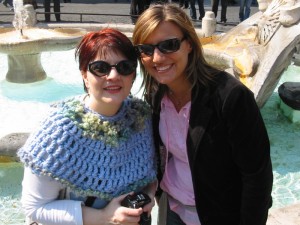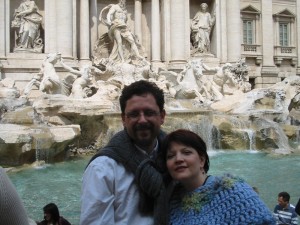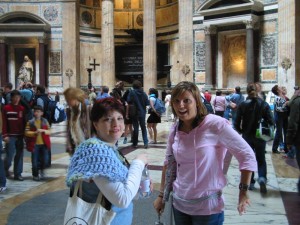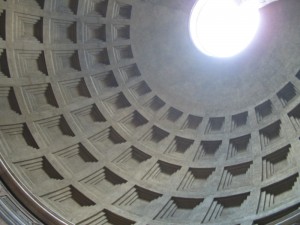Every one soon or late comes round by Rome.
(Ring and the Book (V, 296), Robert Browning, 1869)
The Plan Nearly Recovers
Francine’s niece Cara, working in London, popped over to stay with us the weekend and meet her Italian cousins.
Accordingly, we adapted the plan.

So yes, we just about killed ourselves.
I do NOT recommend this sort of itinerary, especially if you are on foot.
A Note About the Roman Metro
The Metro is fast, efficient, and cheap. A weekly pass can’t be beat.


I think they’re dancing.
If you want to go somewhere it doesn’t go, however, you’re in for a long hike.
The Plan is Utterly Scrapped
At the Piazza Santa Maria Maggiore, we met with Francine’s delightful cousin Leone, who took us to the first of the Family Gatherings.

No photo can do it justice.
The noise was deafening, the laughter contagious despite the language barrier, and of the food and wine there was no end.
One cousin and her husband announced a pregnancy. We all signed the cast of Leone’s younger son (a football injury, proudly described).
Hovering over all was the presence of the patriarch, Uncle Settimio: an artist as a youth, now a retired insurance adjuster.
Vain and dapper, he dyes his perfectly coifed hair and uses makeup to hide the blemishes of old age. He habitually dangles an unlit cheroot from his fingers. When he speaks, he is accorded the respect of silence as is no one else.
When the talk turns to politics, he ventures no opinion, but even this is enough to deflate the loudest of the pro- and anti-Berlusconi invective.
In the midst of this, one of the more animated cousins, Gianni, who has all the gravity of the class clown, receives a phone call.
His face falls. He addresses Uncle Settimio, but he’s really telling us all.
“Il papa è morte.”
And just like that, the rest of our schedule is scrap.
In the next few days, four million people would descend on Rome.
Day Three is next.